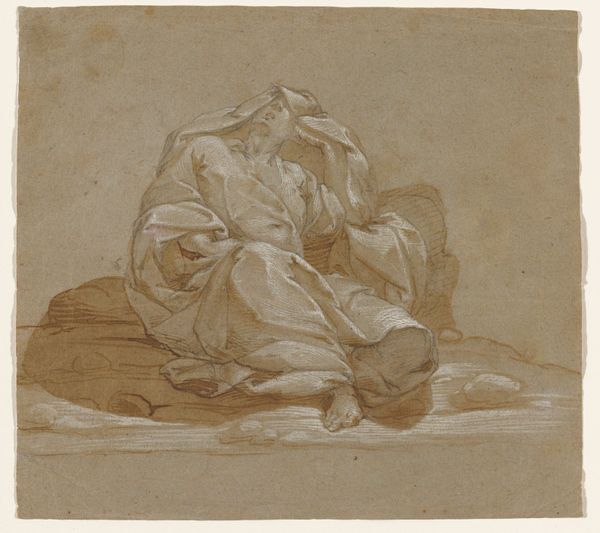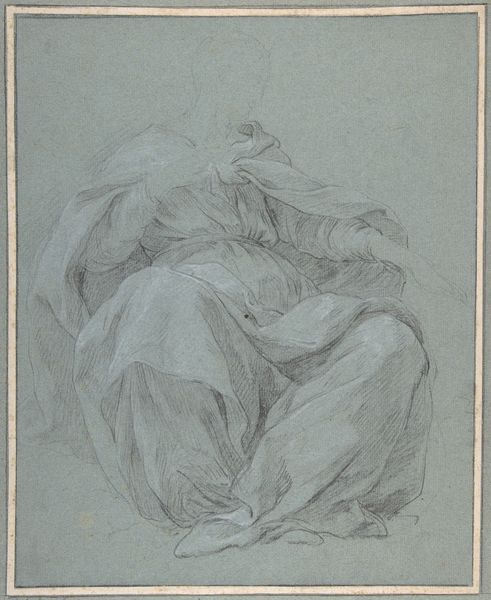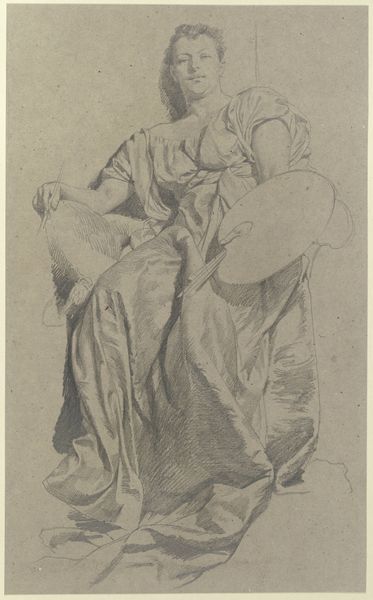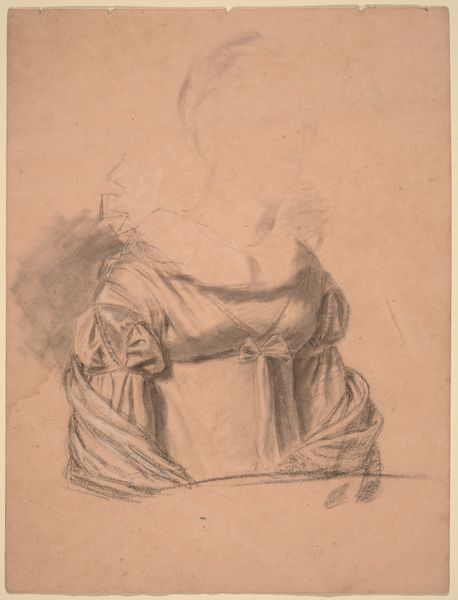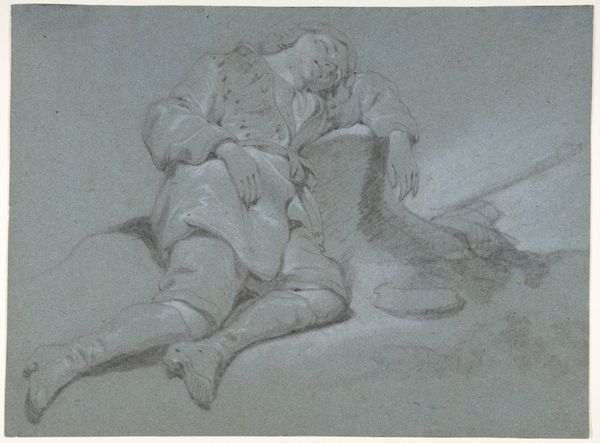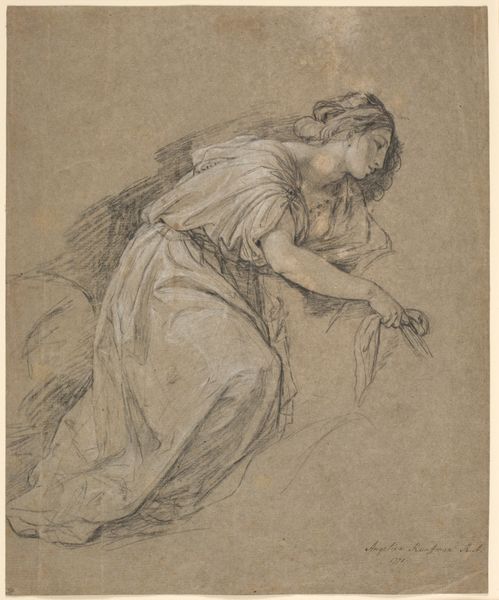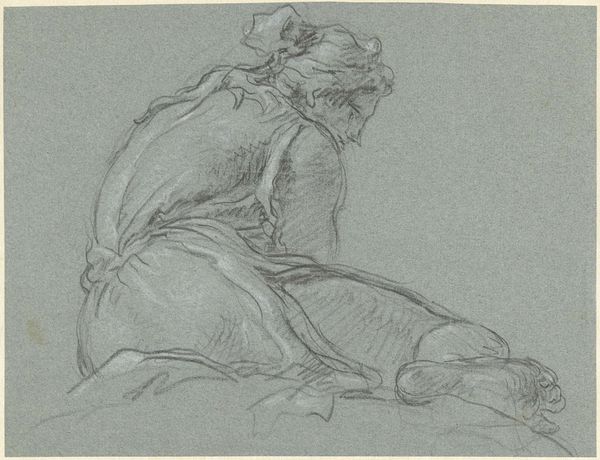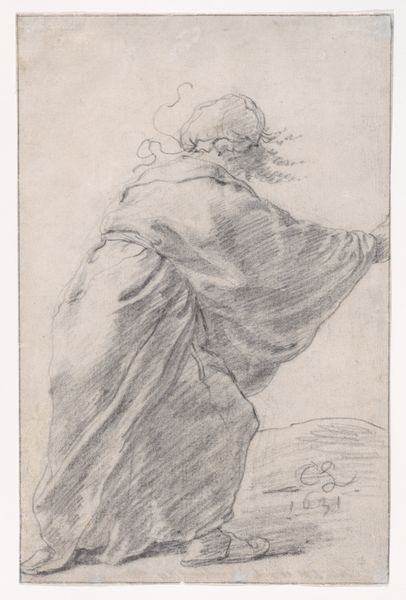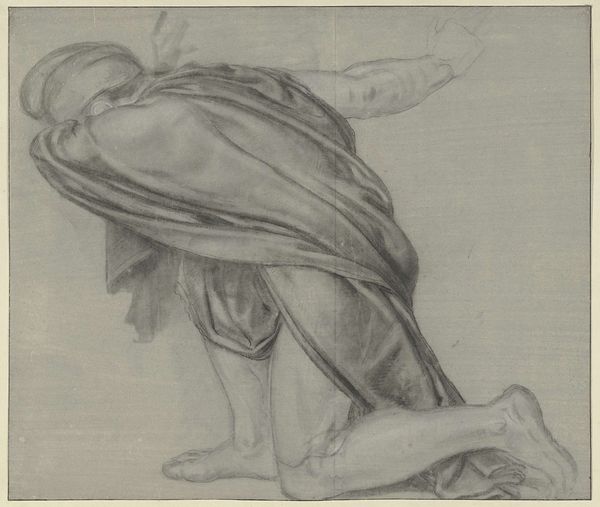
drawing, paper, pencil
#
drawing
#
baroque
#
dutch-golden-age
#
figuration
#
paper
#
pencil
#
genre-painting
#
nude
Dimensions: 7 9/16 x 9 in. (19.2 x 22.8 cm)
Copyright: Public Domain
Curator: We are looking at "Weeping Woman Kneeling, Seen from Behind", a drawing created by Jacob Backer sometime between 1630 and 1640. It resides here at the Metropolitan Museum of Art. Editor: My initial impression is of fragility, almost collapse. The grey paper and delicate pencil strokes contribute to this overwhelming sense of despair. The positioning from the rear obscures identity, focusing purely on posture and gesture. Curator: Indeed. Backer's mastery lies in his ability to convey profound emotion through subtle formal choices. Note the emphasis on line, and the stark contrasts achieved with the minimal use of light and shadow to depict a dramatic scene, a woman in distress. Editor: One cannot ignore the socioeconomic contexts of the Dutch Golden Age that led to the artist’s popularity in portraiture. His figuration and subtle touches in "Weeping Woman" also touch on contemporary interests of the Baroque aesthetic. Are we meant to pity her or scrutinize her nakedness, though subtle? Curator: The socio-economic lens through which Backer created this image cannot be overlooked. His nude depictions of woman capture the themes and context of a culture steeped in religious and imperial dominance. This artistic work is a social commentary, given that many art patrons were powerful landowners and merchants. Editor: Do you believe it’s the artist’s objective gaze that drives the viewer, or that a certain emotive force of empathy for the person? Perhaps both drive meaning, which contributes to our perspective of female portraits and poses, as viewed through gender. Curator: I am particularly interested in the material elements themselves. Consider the paper, the pencil's darkness, the density of the marks. They coalesce to embody vulnerability. These visual cues of color, texture, shade create and dictate how emotion comes through. Editor: A crucial detail I have been considering is where art stands when reflecting themes from broader historical moments and events. I wonder, as an exhibit piece, whether there will ever be an end to the discussions this piece stimulates when considering that socio-economic divide and its lasting impacts. Curator: As always, this discussion brings out fresh new understandings. Perhaps we may leave our audience pondering these concepts too!
Comments
No comments
Be the first to comment and join the conversation on the ultimate creative platform.
